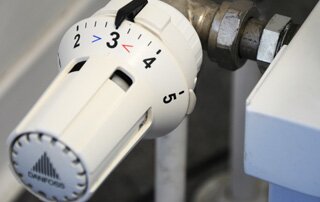The activities carried out under the RELaTED project address the need for increased energy efficiency and new management strategies in relation to ULT DH. Installing smart meters allows for increased insight into the conditions of networks and installations and by the use of machine learning to utilize these data in new algorithms and tools.
RELaTED report 2.4, which is part of a set of reports that define the system architecture of the RELaTED concept, describes new possibilities concerning measurement and control of ULT DH and other DH systems with high energy flexibility.
 RELaTED task 2.4 aims at developing a framework for advanced control procedures for managing and optimizing ULT DH networks based on energy consumers equipped with smart meters and decentralized connected energy producers.
RELaTED task 2.4 aims at developing a framework for advanced control procedures for managing and optimizing ULT DH networks based on energy consumers equipped with smart meters and decentralized connected energy producers.
The objective of this work, that is part of a set of reports that define the system architecture of the RELaTED concept, is “developing the framework for advanced control procedures for managing and optimizing low temperature districts with several independent energy procedures”.
This has been done by use of Machine Learning (ML) which is a fast-developing technology that allows for handling large and complex systems with many parameters and large amounts of data, aiming to find optimal patterns and solutions as well as abnormal behavior. Machine learning is based on training of procedures by use of representative experience (training data), meaning data from LT or ULT DH networks based on energy consumers equipped with smart meters, other operational data sources as well as weather data- and forecasts.
The presented work is based on the following concepts:
- DH Doctor focusing on automatic fault detection and identification of connections/substations with optimization potential.
- DH Autotune focusing on providing recommendations for production set-points and for notification of deviations from expected parameter values.
Together with historical training data from district heating supplies in Denmark and Estonia used for development and test, this has resulted in two algorithms or tools: DH Doctor intended for real-time evaluation of DH substations (fault detection and detection of outliers) and DH Autotune intended for load forecasting (recommendations for set-points and reaction to abnormal behavior by an alarming system).
Furthermore, the tools have been divided into two groups such that algorithms based on both daily and hourly readout of smart meter data are available to widen up the applicability to most DH suppliers regarding their prerequisites of data.
Finally, it is discussed how the tools can be implemented at utilities for practical use and experience in a next step to further evaluate their potential and opportunities seen from a supplier’s point of view. This will enable further refinement and tuning of the algorithms towards increased applicability and practical value.
